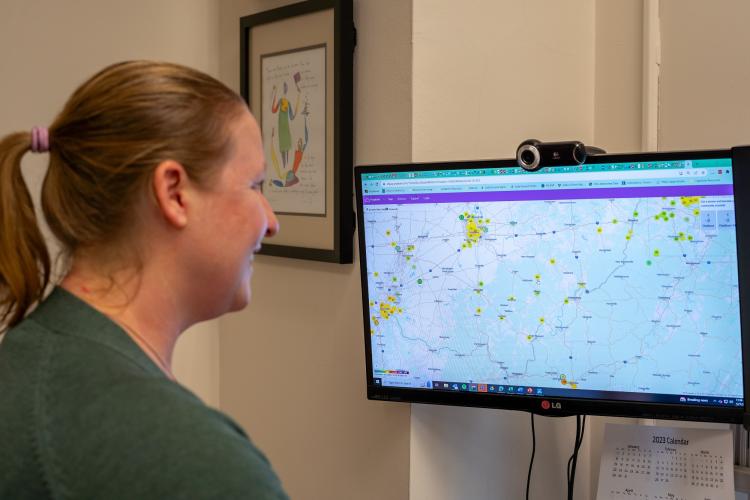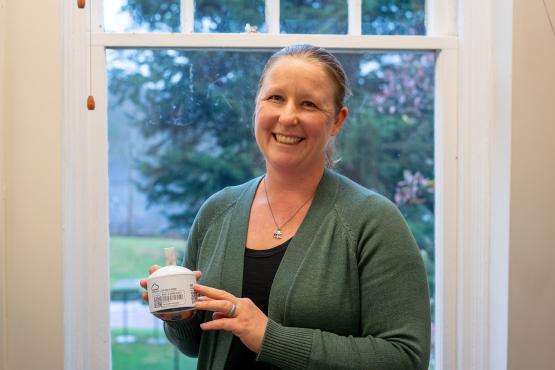
PurpleAir Air Quality Project aims to increase health information, data collection across southeast Ohio

The Voinovich School of Leadership and Public Service is partnering with the Athens City-County Health Department to coordinate with other health departments in Appalachian Ohio on a project installing PurpleAir Particulate Matter (PM) monitoring equipment throughout the region.
Dr. Natalie Kruse, director of the Environmental Studies Program at the Voinovich School, said the project aims to provide residents in southeast Ohio with access to adequate, updated air quality information following the Canadian wildfires from the summer.
“We were looking up our air quality and air quality forecasts on these national sites like AccuWeather that are using satellite imagery that is being ground-truthed by almost no data,” Kruse said. “We recognized that there was an opportunity to make that data better and more local and to allow for a better distribution of monitors to get more local information into our communities.”
The PurpleAir air quality monitors use laser counters to measure the number and size of particles in the air between 0.3 and 10 micrometers in diameter. Readings are transmitted to the cloud, refreshing the data approximately every two minutes, to be displayed on an interactive PurpleAir map. This map is accessible on any internet browser to look at real-time PM readings to help individuals make informed decisions about their health and safety.
In particular, urban or high industrial zones can have varying air contamination levels that can be comprised of different materials when compared to rural or residential zones in the same region. Air quality indexes typically range from 0 to more than 300 and are categorized from good to hazardous based on pollutant levels in the air and danger to sensitive groups.
Particle pollution exposure over long periods of time can have detrimental health effects, especially for people with underlying health conditions such as asthma, heart disease or lung disease. If exposed, some complications include coughing, shortness of breath and extreme fatigue.
The multi-county project is funded by the Voinovich School and the U.S. Department of Energy’s Portsmouth-Paducah Project Office in an effort to install more PurpleAir sensors at locations including libraries, schools or government buildings.

Currently, there have been seven sensors installed at community locations in Jackson, Pike, Athens, Meigs, Vinton and Galia counties. In partnership with health departments and the Athens County Public Library system, more are expected to be installed throughout Perry, Noble, Jackson, Scioto, Meigs, Athens, Gallia, Muskingum, Hocking, Pike, Morgan, Vinton, Belmont, Scioto, Jefferson and Coshocton counties in the upcoming year.
For the next stage of the project, new educational materials helping community members react to poor air quality conditions will be developed to include regionally specific terminology relevant for residents of smaller communities in southeast Ohio, as the current materials are tailored to urban areas.
Kruse said she is partnering with educational outreach officials at the Athens City-County Health Department to develop more local resources.
“What we'd like to do is update those materials with more regionally specific imagery and action for rural areas and Appalachia, that would be different,” Kruse said. “If we can cater these sorts of materials to be more specific to a rural Appalachian context, then they're going to be easier for people to access. They're going to get the recommendations that are going to be more meaningful to their lives.”
For more information about the PurpleAir Air Quality Monitoring system and to view the active map for our area, visit: https://map.purpleair.com/1/mAQI/a10/p604800/cC0#7.92/38.959/-82.388
